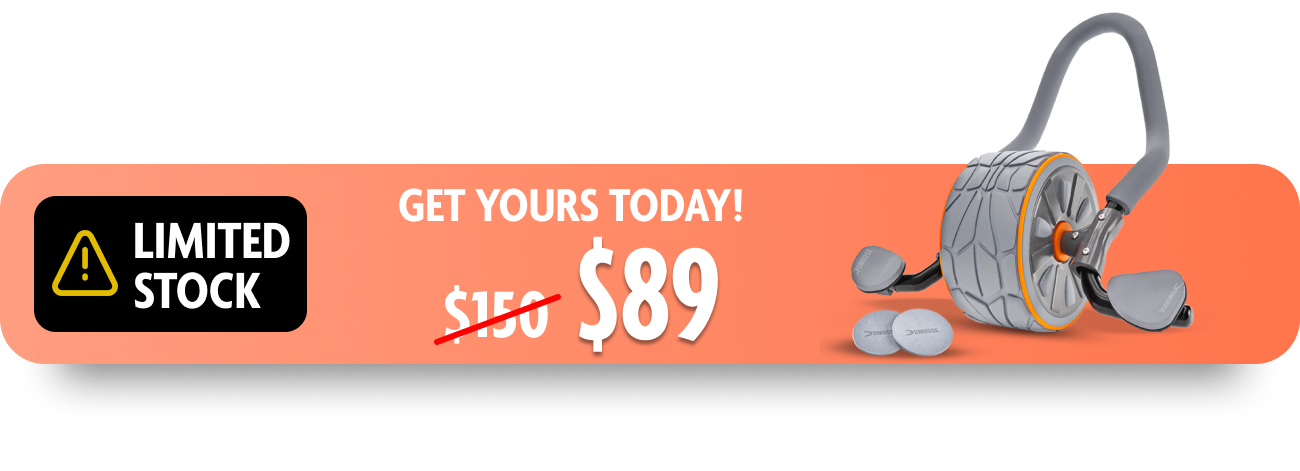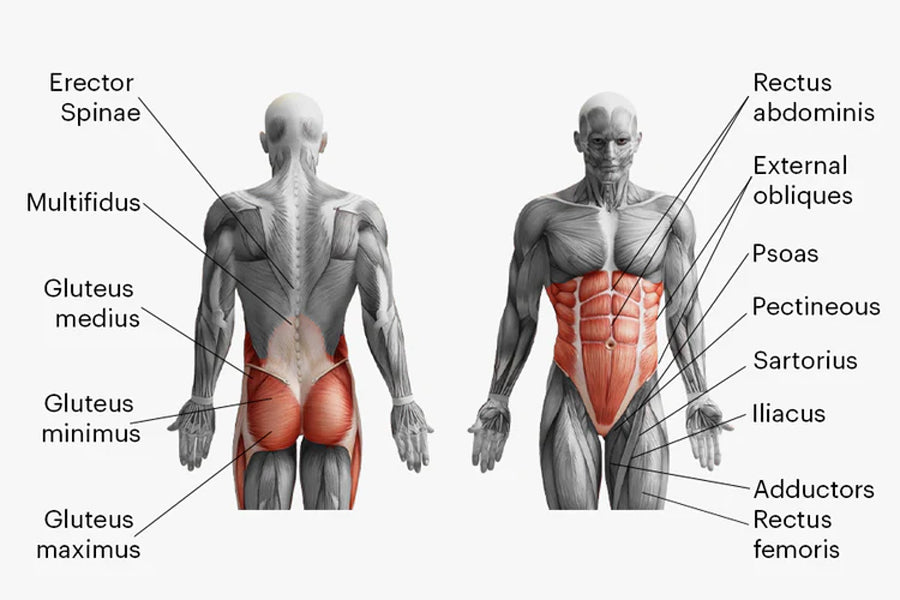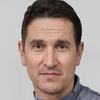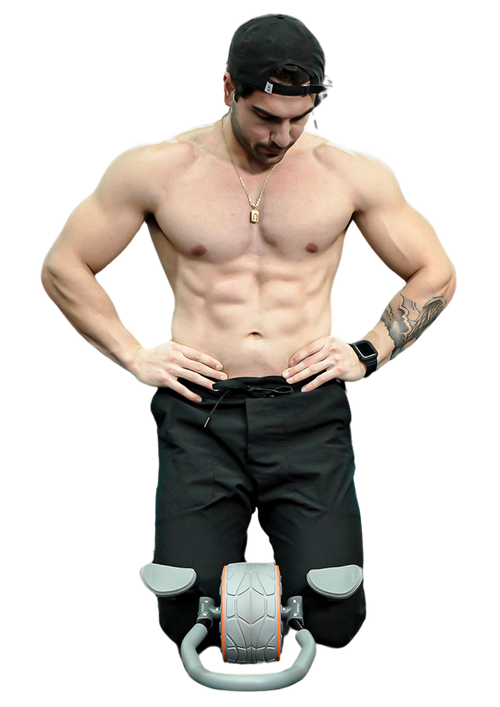A weak core isn’t just about lacking visible abs. It affects your posture, balance, and performance in everyday movements and exercise.
If you’ve noticed poor stability during workouts, discomfort in your lower back, or difficulty performing basic exercises, your core strength might be the culprit.
Fortunately, strengthening your core doesn’t have to be complicated. Simple yet effective tools like the DMoose Ab Roller with elbow support can help you target those deep core muscles.
In this post, we’ll dive into the 10 signs of a weak core and how to address them with practical solutions.
Symptoms of a Weak Core
In this section, we’ll explore common signs that indicate insufficient core strength. These signs are often overlooked, but they can point to a need for better core stability. Keep reading to learn how to strengthen your core and improve your overall health today!
1. You Experience Lower Back Pain

Persistent lower back pain that doesn’t seem to go away can often be a sign of weak core muscles. Your core muscles are essential for supporting your spine, and without them, your back bears the brunt of the load.
Weak core strength can lead to poor posture and increased strain on your lower back, causing discomfort or pain. Strengthening your core can help alleviate this pain and provide better support for your spine.
2. You Lack Power & Stability in Your Upper Body
If you struggle with upper body exercises like pull-ups, weightlifting, or even everyday movements like swinging a bat, weak core muscles may be the cause. Your core is essential for stabilizing and generating power in these activities, and without it, other muscles are forced to compensate, reducing performance and increasing injury risk.
A weak core can also affect simple tasks like carrying groceries or lifting a child. It limits your ability to maintain proper posture, balance, and movement efficiency, leading to unnecessary strain on your shoulders and lower back.
Improving core strength through exercises like planks, leg raises, and compound movements (e.g., squats, deadlifts) can help boost upper body performance and prevent injury, giving you more power and stability in both workouts and daily activities.
3. You Lie on the Floor & Feel Like Your Spine is Sagging

A strong core is crucial for maintaining good posture and preventing back pain. Your core muscles, which include the abdominals, obliques, and lower back muscles, play a vital role in stabilizing your spine and keeping it in a neutral position. When these muscles are weak, your spine can easily become misaligned, leading to discomfort, poor posture, and even injury.
A weak core can cause unnecessary strain on other areas of your body, such as your lower back and shoulders. Fortunately, there are several effective exercises you can do to strengthen your core muscles, improving your overall stability, reducing pain, and enhancing your posture.
By targeting these muscles regularly, you can support your spine and prevent the discomfort that comes with a weak core.
4. When You Bend Over, Your Stomach is Sticking Out More Than Usual
If you notice your stomach sticking out more than usual when you bend over, it could be a sign of weak core muscles. A strong core plays a crucial role in supporting your spine and maintaining good posture. It helps keep your midsection firm and stable, preventing excessive arching of your lower back while bending or performing other movements.
When your core muscles are weak, you may find that your abdomen protrudes forward, especially when bending at the waist. This misalignment can cause additional strain on your lower back, leading to discomfort or pain over time. A lack of core strength makes it harder to keep the spine in a neutral position, increasing the risk of improper movement patterns and potential injury.
This issue can also be influenced by other factors, such as an increase in body fat around the midsection. However, regardless of the cause, addressing weak core strength is essential to improving posture, reducing back pain, and preventing further discomfort. Strengthening your core with exercises like planks, crunches, and leg raises can help restore balance and stability to your body.
5. You Feel Your Back & Shoulders Sagging and Tightening Up During Weight Lifting
If your back and shoulders sag or tighten up during weight lifting, it may be a sign of weak core muscles. A strong core stabilizes the body, ensuring proper form and technique during lifts.
Without this support, your back and shoulders compensate, leading to discomfort or injury. If you feel sagging or tension, take a break and focus on strengthening your core to improve stability and prevent strain.
Building core strength is essential not only for better performance but also for protecting your body during heavy lifts. Incorporating core-focused exercises into your routine, like planks, dead bugs, and rotational movements, will help prevent improper compensation from other muscle groups, allowing you to lift with confidence and reduce injury risk.
6. You Have Difficulty Standing Up From a Squatting Position without Using Your Hands for Support
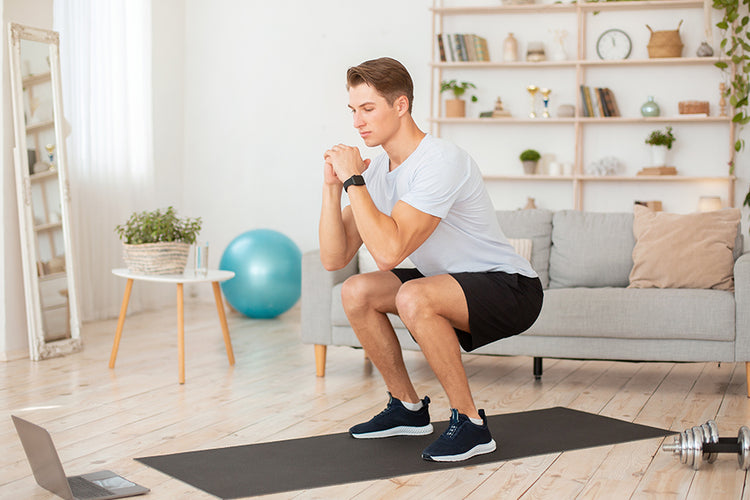
If you struggle to rise from a squatting position without using your hands, weak core muscles could be the cause. Your core is essential for stabilizing your body during movements like squats, helping you maintain proper alignment and control.
A lack of core strength can make it difficult to perform squats correctly, leading to imbalances that may strain your lower back, hips, and knees. To fix this, strengthening your core is essential to improve your squat form and prevent further issues.
7. You Lack Balance and Stability in Your Lower Body
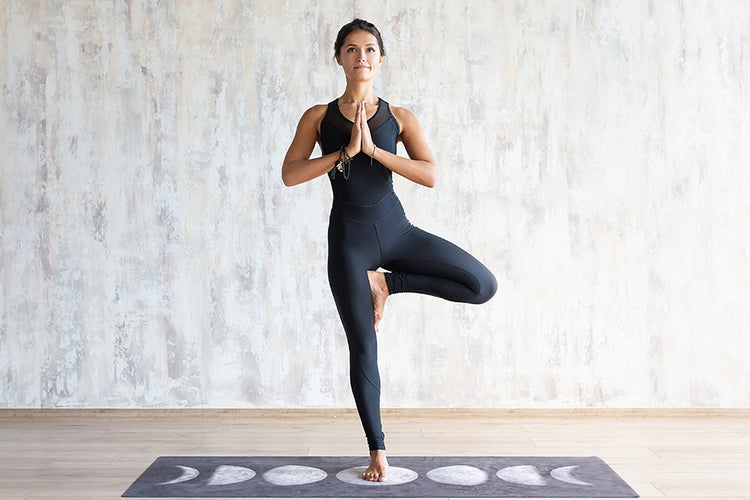
If you struggle to balance on one leg or on unstable surfaces, it could be a sign of weak core muscles. The core is vital for stabilizing your pelvis, hips, and lower back, and without proper strength, your lower body movements become unstable.
Weak core muscles can make exercises like lunges, squats, and deadlifts more difficult and less effective, as they rely on a stable base. Additionally, compensating with other muscles, like your arms or legs, can lead to injury and decreased performance.
Incorporating exercises like planks, bird dogs, and side planks will help strengthen your core, improving lower body stability. You can also add balance training, such as single-leg deadlifts and stability ball exercises, to further challenge your coordination.
8. You Experience Pain in Your Lower Abdomen or Back

If you feel pain in your lower abdomen or back, weak core muscles might be to blame. The core is responsible for supporting your spine and maintaining posture, and when it’s weak, it can lead to discomfort and imbalances in these areas.
This can interfere with everyday activities, such as bending, lifting, or sitting for long periods. Strengthening your core with exercises that target the abdomen, lower back, and hips can help alleviate pain and prevent further issues.
9. You Have Difficulty Walking Upright without Swaying Towards One Side
Do you find yourself leaning to one side when walking? This can be a sign of weak core muscles, which are crucial for maintaining balance and proper posture while walking.
When your core is weak, it can lead to instability, making it harder to walk upright without swaying. Strengthening your core with exercises like planks, Russian twists, and bicycle crunches can improve balance and stability, reducing the risk of falls and injuries.
10. You Have Difficulty with Everyday Tasks That Require Core Strength
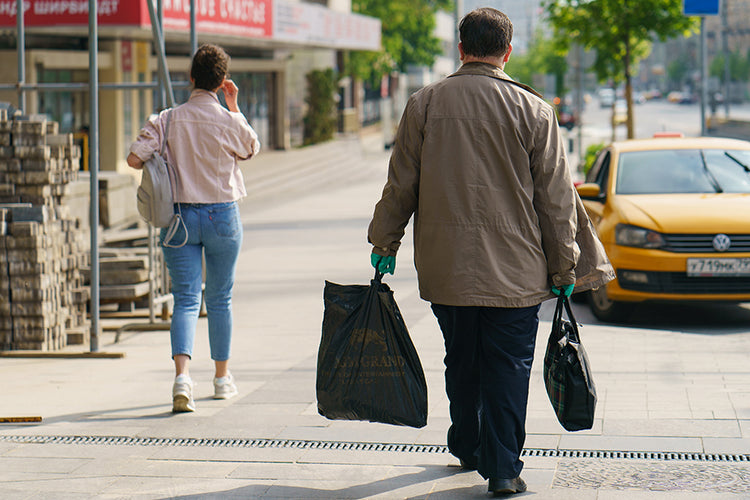
A weak core can make simple tasks, like lifting a child, carrying groceries, or even climbing stairs, feel much harder. These everyday activities rely on core stability, and without it, you may experience discomfort or struggle to perform them efficiently.
Your core muscles stabilize your spine, enabling you to move and carry out daily tasks without pain. Strengthening your core will not only help improve your overall functionality but also reduce stress on your body during these activities.
Exercises to Strengthen Your Core Muscles
Strengthening your core muscles will improve your posture, reduce lower back pain, and boost athletic performance. Here are five effective exercises that can help:
Plank
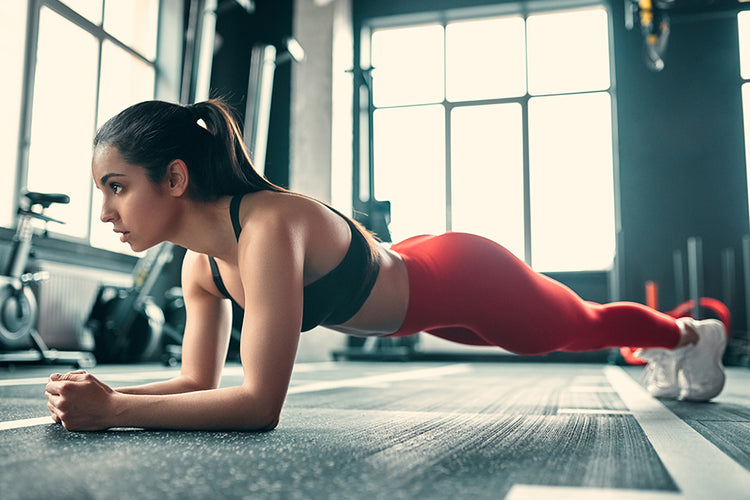
The plank is a powerful core-strengthening exercise that engages your entire core, including your abdominal, lower back, and shoulder muscles. It helps stabilize your spine and build endurance.
- Rest your forearms on the floor, elbows under your shoulders, and hands facing forward at a ninety-degree angle.
- Maintain a straight back while balancing on the balls of your feet and forearms.
- Ensure your head, shoulders, hips, knees, and ankles are aligned, avoiding any arching in your lower back.
- Hold the position for as long as possible while keeping your core engaged.
Ab Wheel Rollout

Ab wheel rollouts are one of the most effective exercises for building a strong core. This movement targets your abs, shoulders, and arms while also engaging multiple muscle groups to help burn fat and improve overall stability.
The exercise activates multiple muscles at once, making it an excellent full-body workout. To perform the ab wheel rollout:
- Place both hands on the ab roller and kneel on the floor.
- Roll the ab wheel forward slowly, extending your body into a straight line.
- Pause for a moment, then return to the starting position by rolling the wheel back in.
Hanging Knee/Leg Raises

Hanging knee and leg raises are excellent core exercises that target your abs, lower back, and hip flexors all at once, helping you build a stronger, more defined core.
- Hang from a pull-up bar or gymnastic rings with an overhand grip and your body straight.
- Bend your knees and engage your lower abs to raise your legs until your thighs are parallel to the ground. Lower your legs slowly back to the starting position.
- For maximum benefit, perform high-rep sets, moving slowly and with full control to effectively tire out the muscles.
- Try variations like hanging oblique knee raises or hanging trunk rotations for added challenge.
For extra comfort and support, use hanging ab straps, allowing you to focus entirely on engaging your core during the workout.
V Sit Ups

V-sit ups are a powerful core exercise that targets multiple areas of your core simultaneously. This movement involves forming a "V" shape with your legs and torso, helping to strengthen your abs and improve overall stability. Beginners can use their hands for support or perform the exercise with bent legs to make it easier.
- Start by contracting your abs and raising your legs to a 45-degree angle with your torso.
- Reach your arms forward or toward your shins while maintaining good posture and breathing deeply.
- Hold the V-shape for a few seconds if you're a beginner, gradually increasing the duration as you build strength.
- Keep your abs engaged as you slowly return to the starting position.
Slider Knee Tucks
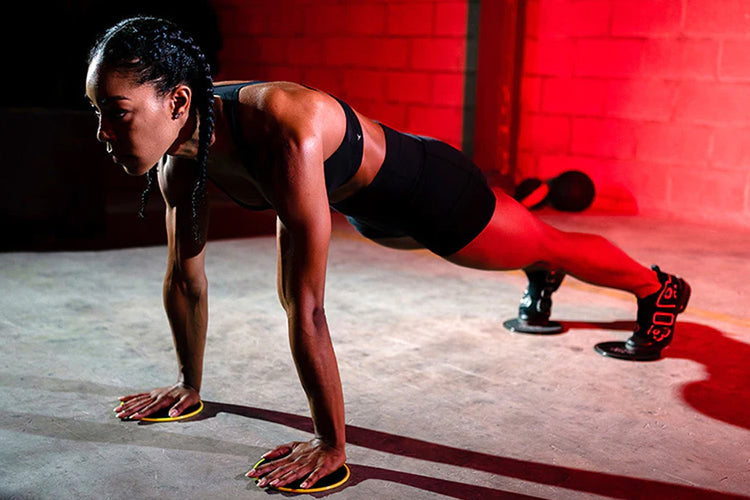
Slider knee tucks are an excellent core-strengthening exercise that challenge your abs, hip flexors, and shoulders. Using core sliders, this exercise increases the intensity by adding movement, helping you engage the core more effectively while improving stability.
Studies have shown that slider exercises can be beneficial for rehabilitation, as they strengthen the core muscles with minimal strain on the spine. These exercises also reduce the pressure on joints like the knees and hips, making them a low-impact but highly effective workout.
- Start in a high plank position with both feet on sliders, keeping your body in a straight line and your core engaged.
- Pull both knees toward your chest while keeping your hips stable and avoiding shoulder hunching.
- Slowly extend your legs back to the starting position, maintaining control throughout the movement.
Takeaway
Core exercises are vital for a healthier, more active lifestyle. Weak core muscles can lead to discomfort, including lower back pain. By strengthening your core, you enhance stability, improve posture, and reduce the risk of injury. To build core strength and endurance, make core-focused exercises a regular part of your fitness routine for better overall health and performance.








